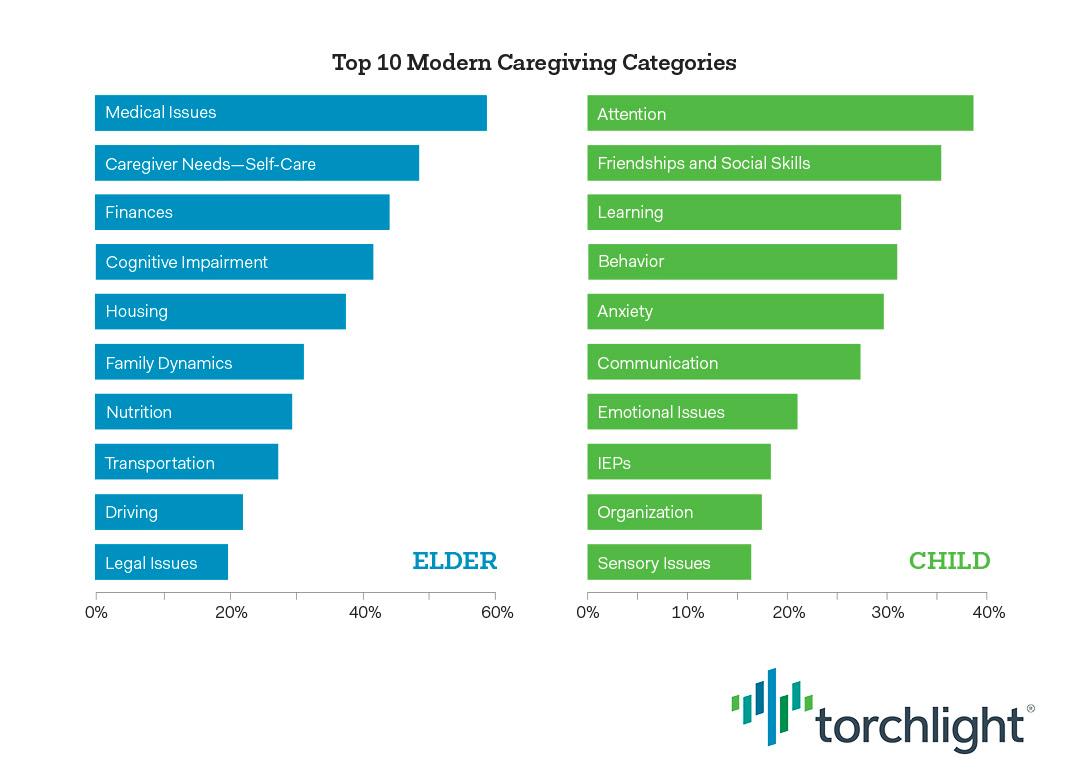Every year in your role as a human resources or benefits leader, it’s your job to develop a people or benefits strategy that connects your company’s goals to your employees’ needs. In rolling out that strategy, you want to maintain your company’s competitive edge, spend wisely, and make decisions based on available data, especially data provided by your employees. But what do you do when employees are not forthcoming with the data you need to inform your decision making?
In the case of family needs, in particular, how do you justify a caregiver initiative when your employees won’t utter those three little words you need to hear: “I’m a caregiver”?
Unfortunately, well-meaning employers unknowingly leave family needs unresolved and HR intentions unfulfilled. Companies like Starbucks, Amgen, Deloitte, and others have already begun to implement corporate caregiving strategies that support their employees. Yet, many other employers await signals that may never come.
So, we set out to crack the code. My company, Torchlight, recently analyzed data collected over nearly three years from a sample of more than 18,000 family caregivers from over 100 companies. The findings in our report Modern Caregiving Challenges Facing U.S. Employees provide some insight that can help you justify and move forward to support caregivers in your workforce — whether or not they self-identify.
Your employees do not think they are “caregivers”
If you ask your workforce today, “Are you a caregiver?” only 20% might raise their hands. That’s in stark contrast to the 73% of employees who reported dealing with a caregiving responsibility in a 2019 Harvard Business School (HBS) report. What accounts for the disparity? The answer is both simple and complex.
Put simply, people are wired to care for the loved ones in their lives. They are “just” mom or dad, spouse or partner, an adult child, someone’s sister or brother. As Laura Poskin, Director of United for Seniors at United Way of Pennsylvania, explains in our report, “A lot of people think of themselves as a really good daughter, wife or husband, but they don’t see themselves in a caregiver role.”
Our data supports that our employee users are more focused on getting the right help for someone close to them. They are just family members struggling with complex situations. Here’s what some of the employees we spoke with told us:
- “I’m worried about my dad’s driving. He insists that he’s fine, but I’ve noticed that the car has all sorts of new dings and scrapes on it. Dad just complains about other drivers being incompetent. We need to figure out if we need to get dad off the road. Help!”
- “The technology and screens in my house have totally taken over my family.
I feel completely ridiculous battling my kids about screen time, but it’s dramatically impacting our family life. Where do I even start?!” - “Mom won’t even consider moving. But she just can’t manage the house anymore. I just want her to be safe, and it’s a big fight every time we talk. My sisters are no help as none of us agrees about what to do, and we all live in different parts of the country. I don’t know what to do.”
- “My son is in high school. He experiences negative feelings, stress, and anxiety due to studying or from other people’s attitudes towards him. He is starting to hurt himself physically. What can we do to help?”
“Caregiver” simply doesn’t resonate for most. And when employers rely too heavily on caregiving terminology in employee communications, they often unknowingly perpetuate a language barrier that can strand an entire segment of the population.
Your employees define caregiving in limiting ways
Here is where it becomes a bit more complex. Most of us understand “caregiving” to mean care for an aging loved one or a relative with a disease, disability or other diagnosis. And with over 43 million Americans providing care for an adult or child in this manner, this perspective is understandable. Data from our report substantiates that people continue to struggle with “traditional” caregiving challenges, such as medical issues, learning challenges, cognitive impairment, and others, as noted below: But, it doesn’t end there.
But, it doesn’t end there.
In today’s modern world, people are also facing additional care issues rarely associated directly with the term “caregiving,” but just as impactful. These “modern caregiving” challenges encompass a far wider range of needs, including elder scams, cyberbullying, elder abuse, teen gaming addictions, and others noted below:
 Broader recognition of these day-to-day stressors requires a broader dialogue and should be viewed as an opportunity rather than a threat.
Broader recognition of these day-to-day stressors requires a broader dialogue and should be viewed as an opportunity rather than a threat.
How to speak your employees’ family care language
The good news is that employers like you are in a unique position to help change the dialogue. Doing so offers considerable upside, especially when you commit to more meaningful employee family connections and supports through some of the following:
Broadening your corporate caregiving culture and language — Move beyond the “traditional” caregiving definition that only focuses on elder care and diseases/diagnoses. Be mindful of modern caregiving challenges across the age continuum and communicate about them through use cases and short stories with which people will identify.
Using relatable language to ask your employees what they “care about” — It can be difficult to communicate a robust corporate caregiving strategy, if you don’t know how much your employees “care.” Survey, interview, or conduct focus groups to gather insights about caregiving family-care challenges, both modern and traditional.
Reviewing (and updating) your company policies for inclusive care language — An audit of caregiving-related policies can reveal critical gaps. You want to be sure that policies use language to encompass all ages, family roles, and types of family care needs.
Training your front-line managers — Few people interact more with the majority of your company’s employees than your front-line managers. They are instrumental in setting the right caregiving “tone” by knowing when and how to incorporate inclusive, supportive language in their interactions with employees. Therefore, make sure they have the training they need to communicate the right words at the right time.
Enrolling internal “ambassadors” in your mission — It’s not uncommon for members of employee resource or affinity groups to know how to talk sensitively about caregiving in ways that will reach other affected employees. Reach out to these employees to share your vision; chances are they will want to help.
A more inclusive definition and positioning of caregiving across the age spectrum will reach more employees and encourage them to use the valuable benefits you offer.
I challenge you to start on your corporate caregiving journey with two simple steps: First, use your words to declare that you hire and care about “employee families,” not just “employees” themselves. Second, commit to modernizing language you use when seeking to support them. Seldom will you experience so much gain from so little lift, and that is why you need more than three little words (“I’m a caregiver”) to make caring good business.
